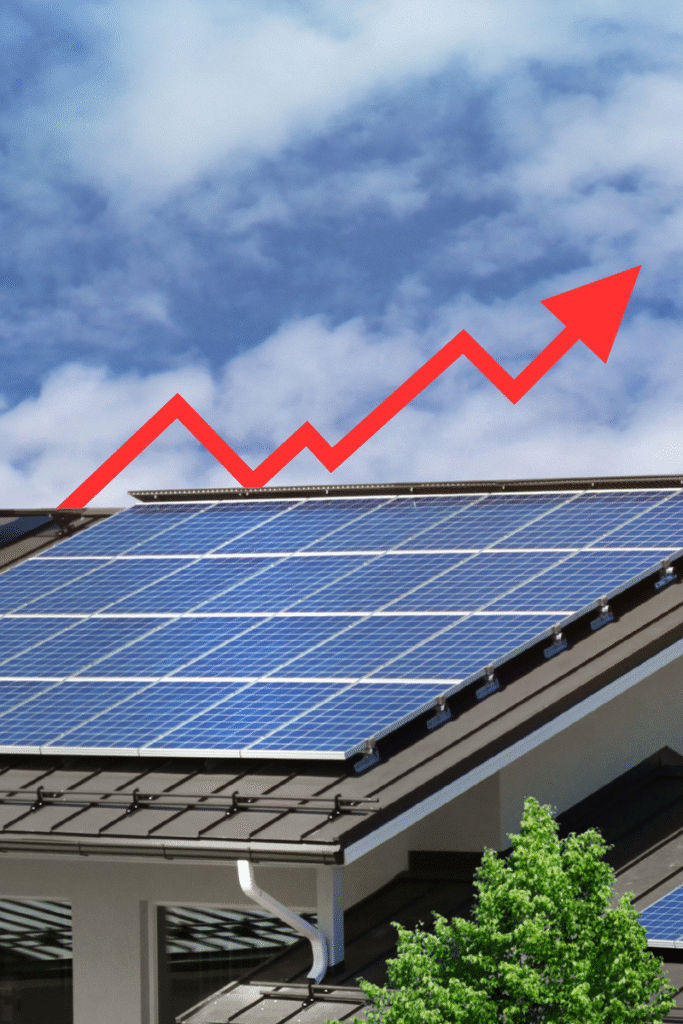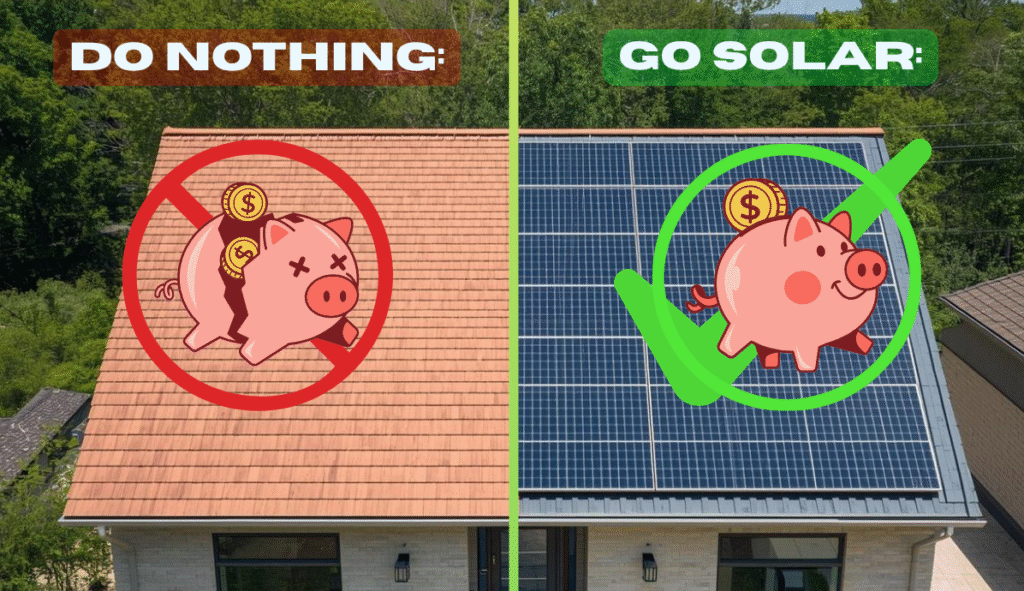Don’t Go Solar Until You Read This!
Many people think going solar will reduce their energy bills… but will it really? Let’s break it down.
What Happens If You Don’t Go Solar?

If you do nothing and keep paying your utility bill, how much can you expect to spend on electricity over time? To figure that out, we need two key pieces of information:
- The current cost of electricity
- The rate of inflation
Here in San Antonio, the average electricity rate is around $0.013 per kilowatt hour (kWh), and the typical residential energy bill sits at about $250 per month.
Inflation, which reflects the overall rise in prices over time, is currently around 3%. That means costs increase about 3% every year.
Now, let’s use that information to project what energy might cost 30 years from now.
Calculating the Future Cost of Energy
Using the Future Cost Formula from Investopedia:
Future Cost = Current Cost × (1 + Inflation Rate)ⁿ
where n is the number of years.
If we plug in our numbers, $0.013 per kWh, an inflation rate of 3% (0.03), and a time period of 30 years, we get:
$0.013 × (1.03)³⁰ = $0.0316 per kWh
That means electricity could more than double in price by 2055.
What about your monthly bill?
$250 × (1.03)³⁰ = $607.50 per month
That’s a serious jump. And we haven’t even factored in higher future energy usage as our lives become more electric (think EVs, smart homes, and new tech).
Over time, those costs really add up.
The Cost of Doing Nothing
If we total up 30 years of paying an electric bill that keeps increasing 3% per year, we can use this formula:
Total Future Cost = [Current Cost × ((1 + r)³¹ – 1)] ÷ r
Plugging in $250 for the monthly bill and 0.03 for inflation, we get about $12,500 in inflation-adjusted monthly costs. Multiply that by 12 months, and the total cost of electricity over 30 years comes to roughly $150,008.
So, doing nothing and sticking with your utility could cost you over $150,000 in three decades.
What Happens If You Go Solar?
Let’s see how going solar compares.
To offset an average $250 monthly energy bill in San Antonio, you’d need roughly an 11.57 kW solar system, which produces around 18,270 kWh per year.
A system that size typically includes about 26 solar panels.
From most solar companies, the cost would be about $41,883.
With MicroGrid Energy, the same system costs around $31,354, or even less. That’s 30% lower than many competitors, and when financed, payments can be as low as $185 per month.
$31,000 today may sound steep, but it’s an investment that shields you from rising energy costs for the next 25 – 30 years.
The Bottom Line
Let’s compare the two options:
- Do nothing: Pay $150,008+ in energy bills over 30 years
- Go solar: Pay around $31,354 for a solar system that lasts the same amount of time.
Solar panels greatly reduce overall energy expenses while locking in predictable, stable rates for the future.

Final Thoughts
Energy costs will only continue to climb, but with solar, you can take control of your energy future today.
If you’re in San Antonio, TX and curious how much you could save, visit MicroesTX.com to learn more about solar installation, system design, and long-term savings.
Because when it comes to your energy bills, the best time to go solar is before prices skyrocket.